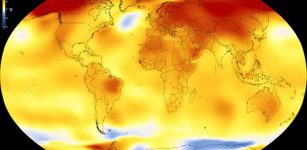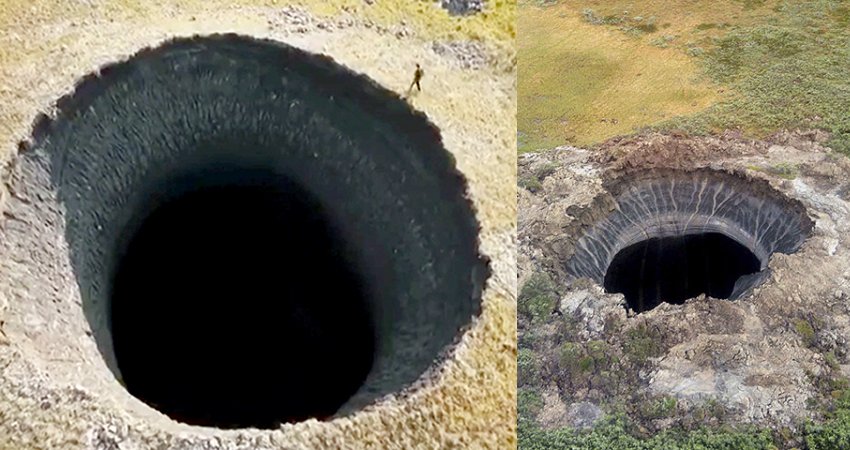Unexplained Heat-Wave ‘Hotspots’ Are Popping Up Across The Globe
Eddie Gonzales Jr. – MessageToEagle.com – Earth’s hottest recorded year was 2023, at 2. 12 degrees F above the 20th-century average, surpassing the previous record set in 2016. The 10 hottest years have occurred in the past decade. With the hottest summer and single day, 2024 is on track for another record.
Regions where observed heat waves exceed trends from climate models. Boxed areas with the darkest red colors are the most extreme; lesser reds and oranges exceed models, but not by as much. Yellows roughly match models, while greens and blues are below what models would project. (Adapted from Kornhuber et al., PNAS 2024)
This may not surprise everyone, but amid rising temperatures, a new phenomenon is emerging: regions experiencing heat waves so extreme they exceed global warming predictions. A study maps these regions worldwide, appearing on every continent except Antarctica like giant blotches. Recently, these heat waves have killed thousands, destroyed crops and forests, and sparked wildfires.
“The large and unexpected margins by which recent regional-scale extremes have broken earlier records have raised questions about the degree to which climate models can provide adequate estimates of relations between global mean temperature changes and regional climate risks,” says the study.
“This is about extreme trends that are the outcome of physical interactions we might not completely understand,” said lead author Kai Kornhuber, an adjunct scientist at the Columbia Climate School’s Lamont-Doherty Earth Observatory. “These regions become temporary hothouses.” Kornhuber is also a senior research scholar at the International Institute for Applied Systems Analysis in Austria.
The study looks at heat waves over the past 65 years, identifying areas where extreme heat is accelerating considerably faster than more moderate temperatures. This often results in maximum temperatures that have been repeatedly broken by outsize, sometimes astonishing, amounts.
For instance, a nine-day wave that hammered the U.S. Pacific Northwest and southwestern Canada in June 2021 broke daily records in some locales by 30 degrees C, or 54 F. This included the highest ever temperature recorded in Canada, 121.3 F, in Lytton, British Columbia. The town burned to the ground the next day in a wildfire driven in large part by the drying of vegetation in the extraordinary heat. In Oregon and Washington state, hundreds of people died from heat stroke and other health conditions.
These extreme heat waves have been hitting predominantly in the last five years or so, though some occurred in the early 2000s or before. The most hard-hit regions include populous central China, Japan, Korea, the Arabian peninsula, eastern Australia and scattered parts of Africa. Others include Canada’s Northwest Territories and its High Arctic islands, northern Greenland, the southern end of South America and scattered patches of Siberia. Areas of Texas and New Mexico appear on the map, though they are not at the most extreme end.
According to the report, the most intense and consistent signal comes from northwestern Europe, where sequences of heat waves contributed to some 60,000 deaths in 2022 and 47,000 deaths in 2023. These occurred across Germany, France, the United Kingdom, the Netherlands and other countries. Here, in recent years, the hottest days of the year are warming twice as fast the summer mean temperatures. The region is especially vulnerable in part because, unlike places like the United States, few people have air conditioning, because traditionally it was almost never needed. The outbreaks have continued; as recently as this September, new maximum temperature records were set in Austria, France, Hungary, Slovenia, Norway and Sweden.
Researchers call the statistical trends “tail-widening,” meaning unusually high temperatures exceed expected increases in average summer temperatures. However, this isn’t occurring everywhere. The study shows maximum temperatures in some regions, like the north-central U. S., south-central Canada, interior South America, much of Siberia, northern Africa, and northern Australia, are actually lower than models predict. Heat is rising there too but at a rate similar to or slower than average changes suggest.
Rising temperatures make heat waves more likely, but the exact causes are unclear. In Europe and Russia, a study by Kornhuber linked heat waves and droughts to jet stream wobbles. This fast-moving air typically stays in a narrow band due to cold northern and warm southern temperatures. However, rapid Arctic warming seems to destabilize the jet stream, creating Rossby waves that draw hot air northward, causing prolonged extreme heat in temperate regions.
This is one hypothesis, but it doesn’t explain all extremes. A study led by Samuel Bartusek on the 2021 Pacific Northwest/southwestern Canada heat wave identified multiple factors. Some were linked to long-term climate change, others to chance. The study found a jet stream disruption similar to the Rossby waves affecting Europe and Russia and noted that rising temperatures had dried regional vegetation, reducing plants’ ability to moderate heat through evaporation. Additionally, smaller atmospheric waves transported heat from the Pacific Ocean eastward. Few people in this region have air conditioning, likely increasing fatalities.
The heat wave “was so extreme, it’s tempting to apply the label of a ‘black swan’ event, one that can’t be predicted,” said Bartusek. “But there’s a boundary between the totally unpredictable, the plausible and the totally expected that’s hard to categorize. I would call this more of a grey swan.”
“Due to their unprecedented nature, these heat waves are usually linked to very severe health impacts, and can be disastrous for agriculture,vegetation and infrastructure,” said Kornhuber. “We’re not built for them, and we might not be able to adapt fast enough.”
Written by Eddie Gonzales Jr. – MessageToEagle.com Staff Writer











